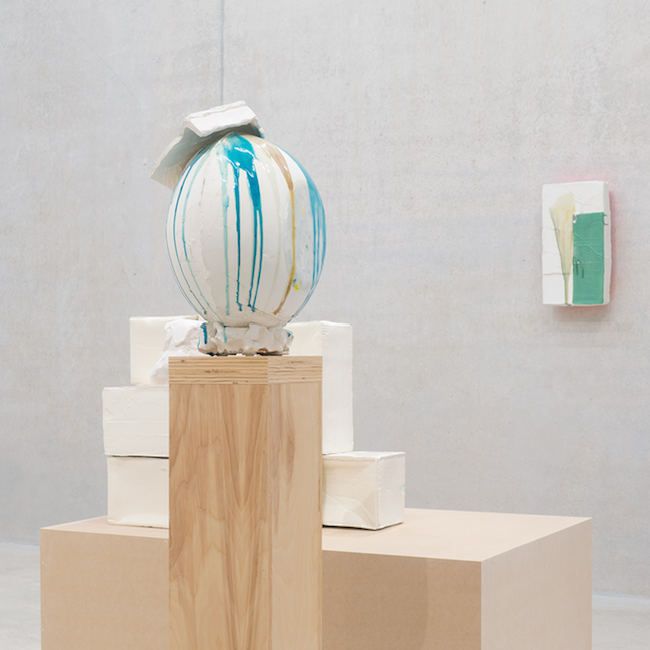We’ve been profiling the work of Brooklyn artist Nicole Cherubini this week. The reason? Firstly, the work is strong. Secondly, over a decade ago, Cherubini was one of the first artists to take the pot into an extremely informal context, messy, kitschy, multimedia and some would say vulgar context. She removed good taste as a comfort station.
Now its a major movement and she is still leading the pack. On Monday we ran an interview between Cherubini and Bomb magazine, which was conducted in advance of Cherubini’s exhibition 500 at the Pérez Art Museum Miami (October 9, 2014 – April 5, 2015). We also posted a presentation in which Cherubini discusses her artistic hero, no less than the Mad Potter himself, George E. Ohr. And, finally, we ran exhibition images of Cherubini’s latest show at Samson projects.
500 included new free-standing and wall-hung works by Cherubini. According to the gallery, the sculptures responded “to the architecture of the space.” Cherubini brought in new shapes and materials, using clay, wood and even plastic wrap to play with viewers’ sense of scale.
This all ties into Cherubini’s exploration of the pot as a sculptural object. She states in the video below:
“It’s been this interesting sort of journey because the pot is an incredible form that I think is in our DNA. We all have this relationship to it. And to use it sculpturally and to try to break the form and break the silhouette and deny its function and deny it’s objecthood— It’s been difficult but also interesting and fruitful.”
The museum states of the exhibition:
Cherubini mines the history and formal possibilities of clay to create works that range from spare, tense minimalism to exuberant and brash decadence. This material has been her primary vehicle for 20 years and she employs a specific constellation of forms and techniques that recur throughout her practice and which have come to constitute her unique vocabulary. These forms are variously reinterpreted, conjoined, stretched, embellished, and combined with other materials to create discrete works that suggest an investigative and experimental approach to sculpture. Cherubini’s work is indebted to an abiding engagement with clay itself and the core of her project resides in her ability to bring the medium’s particular materiality, forms, and history to bear on the ongoing dialogue of painting and sculpture.
Writing for Art in America, Faye Hirsch described the wooden struts that surround Cherubini’s clay vessels.
The structures look like pseudo-modernist shelving gone awry. Open, geometric components constructed of painted wood are assembled into gravity-defying composites that seem precarious resting places for the vessels they nest.
Please enjoy these exhibition images from 500, courtesy of the artist and the museum and keep checking back here for more Cherubini coverage this week.
Love contemporary ceramic art + design? Let us know in the comments.





Nicole Cherubini, 500 at Pérez Art Museum Miami, 2014. Photographs courtesy of the artist and the gallery.



Add your valued opinion to this post.